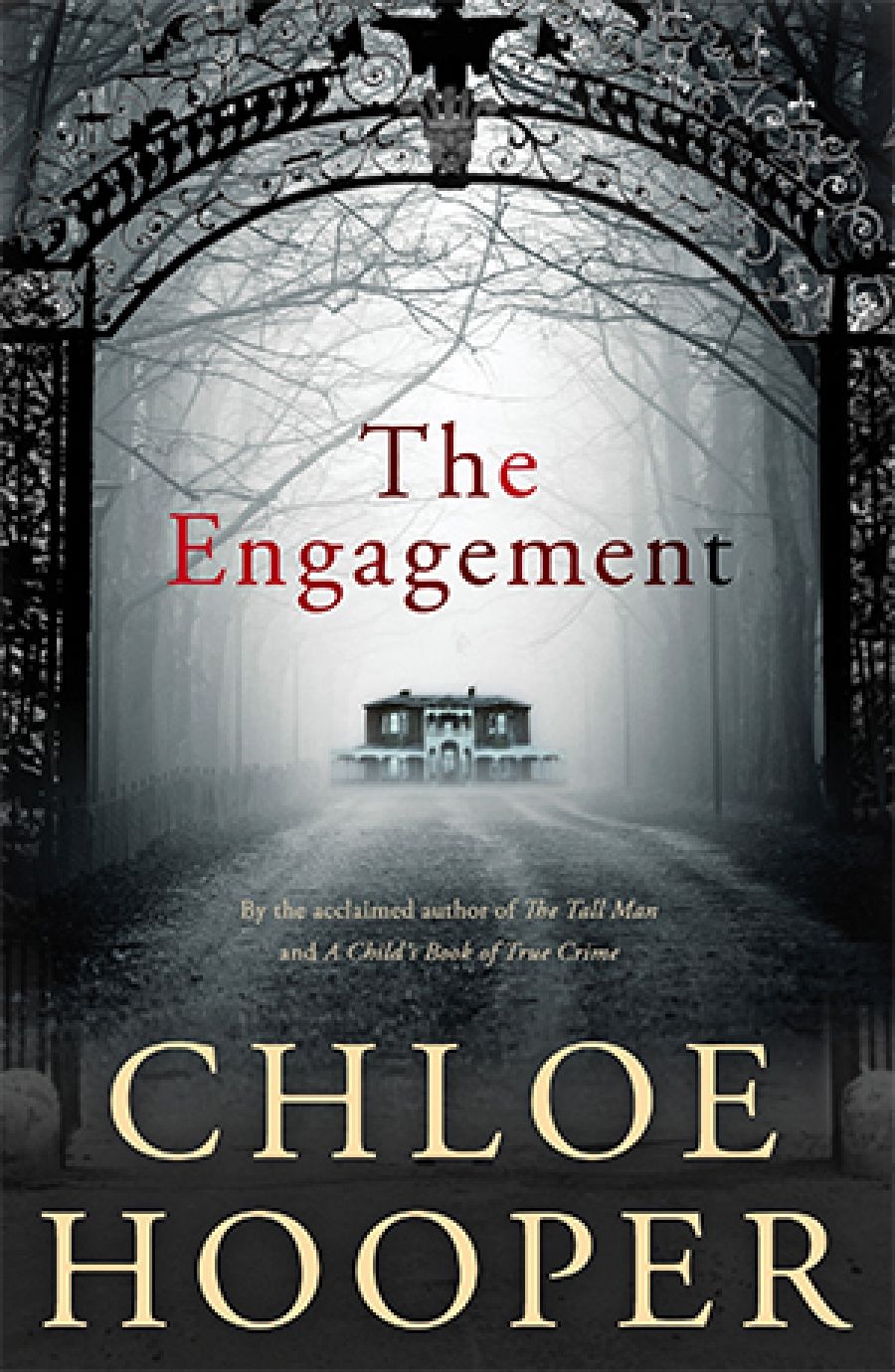
- Free Article: No
- Contents Category: Fiction
- Review Article: Yes
- Online Only: No
- Custom Highlight Text:
The first time The Engagement’s narrator, Liese Campbell, sees the family homestead owned by her lover, Alexander Colquhoun, she is struck by its imposing physical presence: ‘We turned a corner … The second storey came into view: eight upstairs windows and each chimney intricate as a small mausoleum.’ As she surveys the isolated Victorian mansion, with its English driveways and gardens, she realises that it has ‘been built precisely so one would feel at its mercy’.
- Book 1 Title: The Engagement
- Book 1 Biblio: Hamish Hamilton, $29.99 pb, 247 pp, 9781926428376
Liese has come to the Western District from Melbourne with the enigmatic Alexander for a romantic weekend. The origins of their affair are unusual and somewhat implausible. It began several months earlier when Liese, a real estate agent, seduced Alexander while showing him around gleaming high-rise apartments and a pied-à-terre. Fuelled by the frisson of having sex in other people’s houses, their affair also involves an element of wilful misunderstanding. Alexander insists on paying Liese for her services, apparently believing that she is a prostitute in real estate agent’s garb. She does not disabuse him. She believes they are playing a pleasurable game in which both players are aware of the artifice and no one is emotionally involved.
Their arrival at the homestead signals the novel’s generic intentions. In true Gothic style, the vague air of menace emanating from the house extends to its owner. It becomes clear that Alexander is psychologically unstable. His proposal to Liese during the course of the weekend is terrifying. Hooper imbues it with all the coldness and resignation of a long-fought legal settlement, while making it clear that the prospective groom is a fantasist and that Liese would be mad to accept him. The novel deploys a host of familiar tropes, and some of its best writing occurs in this overtly Gothic mode. Liese discovers, when she tries unsuccessfully to leave, that the house is really a prison. She stumbles along poorly lit hallways; discovers hidden rooms behind locked doors. The surrounding landscape comes to seem complicit in her entrapment, reflecting her psychological and material isolation. The trees are skeletal; the birds ravenous hunters or beautiful victims. Dogs bark and howl.
The novel’s layered imagery, macabre and claustrophobic, heightens the tension as Liese’s fear becomes immobilising. On the few occasions when Alexander warily allows her to leave the house with him, her heart sinks as she encounters the bewildering number of gates to be opened and closed. The clanking of the metal chains as she unfastens and refastens them with hands that are numb and clumsy with cold reinforces the apparent hopelessness of her plight.
Hooper is interested in the ways in which sexual relationships are transacted and regulated. The anachronism of the literary genre is juxtaposed with contemporary social mores to highlight the issues of power and obligation, and to consider how emotional and material factors are to be measured and valued. Throughout The Engagement there are many literal exchanges of cash, but there are just as many references to the business of marriage, its contractual nature, and to the perceptions of ownership that have traditionally attached themselves to its conventions. Images of physical and financial entrapment become conflated in Liese’s thoughts.
This is the crux of the novel. Despite her growing and justified uneasiness with Alexander’s behaviour, Liese nevertheless allows herself to fantasise about how she might make the marriage work. She indulges in romantic daydreams about being a grazier’s wife, the kinds of changes she would make to the house, and the family they would raise together. She seriously considers Alexander’s proposal and accepting his gift of a beautiful engagement ring, even though she also knows that she is in danger and must escape at once.
Liese is a contradictory character, who should be more interesting than she is. She never really convinces as the unreliable narrator who tailors her past to suit Alexander’s idea of her, nor as a tragic Gothic heroine whose fate is sealed by her villainous captor. She is not smart enough in the first instance, and is too smart to be a victim of the latter. In a novel that uses genre so effectively to raise the issues of sex, marriage, and prostitution, it is a shame that Liese is not a more robust creation, that her character is not strong enough to bear the weight of these themes.
The Engagement approaches ideas of possession and control from three directions, which it treats as loosely analogous: ownership by financial means of a person or property; control by literal imprisonment; and the kind of psychological control that manifests itself in manipulative mind games. It is the psychological element that feels thinnest. Hooper masters all the generic plot devices, but her characters’ responses and motivations do not always ring true. When Alexander seeks to take Liese as his wife, to possess her in a misguided attempt at protecting her from her morally delinquent past, she can neither escape nor submit. The novel thus gestures toward a dramatic resolution that it cannot carry through. It ends up being caught between the satisfactions of a generic ending and its ambition for its depiction of Liese’s quandary to be psychologically credible. The drama peters out towards the end of the novel, and everyone is left to limp away unsatisfactorily.


Comments powered by CComment